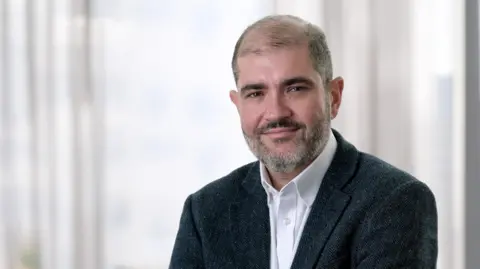Sci-Tech
Lynn Conway, Computing Pioneer and Transgender Advocate, Dies at 86

Lynn Conway, a pioneering computer scientist who was fired by IBM in the 1960s after telling managers that she was transgender, despite her significant technological innovations — and who received a rare formal apology from the company 52 years later — died on June 9 in Jackson, Mich. She was 86.
Her husband, Charles Rogers, said she died in a hospital from complications of two recent heart attacks.
In 1968, after leaving IBM, Ms. Conway was among the earliest Americans to undergo gender reassignment surgery. But she kept it a secret, living in what she called “stealth” mode for 31 years out of fear of career reprisals and concern for her physical safety. She rebuilt her career from scratch, eventually landing at the fabled Xerox PARC laboratory, where she again made important contributions in her field. After she publicly disclosed her transition in 1999, she became a prominent transgender activist.
IBM offered its apology to her in 2020, in a ceremony that 1,200 employees watched virtually.
Ms. Conway was “probably our very first employee to come out,” Diane Gherson, then an IBM vice president, told the gathering. “And for that, we deeply regret what you went through — and know I speak for all of us.”
Ms. Conway’s innovations in her field were not always recognized, both because of her hidden past at IBM and because designing the guts of a computer is unsung work. But her contributions paved the way for personal computers and cellphones and bolstered national defense.
In 2009, the Institute of Electrical and Electronics Engineers gave Ms. Conway its Computer Pioneer Award, citing her “foundational contributions” to the development of supercomputers at IBM and her creation, at Xerox PARC, of a new way to design computer chips — “thereby launching a worldwide revolution.”
At Xerox in the 1970s, Ms. Conway, while working with Carver Mead of the California Institute of Technology, developed a way to pack millions of circuits onto a microchip, a process known as very large-scale integrated design, or VLSI.
“My field would not exist without Lynn Conway,” Valeria Bertacco, a professor of computer science and engineering at the University of Michigan, was quoted as saying in an online tribute to Ms. Conway. “Chips used to be designed by drawing them with paper and pencil like an architect’s blueprints in the predigital era. Conway’s work developed algorithms that enabled our field to use software to arrange millions, and later billions, of transistors on a chip.”
Lynn Ann Conway was born on Jan. 2, 1938, in Mount Vernon, N.Y., to Rufus and Christine Savage. Her father was a chemical engineer for Texaco, and her mother taught kindergarten. The couple divorced when Lynn, the elder of two children, was 7.
“Although I was born and raised as a boy,” Ms. Conway wrote in a long personal account of her life that she began posting online in 2000, “all during my childhood years I felt like, and desperately wanted to be, a girl.”
Her math and science talents were quickly apparent. At 16, she built a reflecting telescope with a six-inch lens.
As a student at the Massachusetts Institute of Technology in the 1950s, she injected herself with estrogen and dressed as a woman off-campus.
But the contradictions of her double life caused intense stress; her grades fell, and she dropped out of M.I.T.
She enrolled at Columbia University in 1961 and went on to earn bachelor’s and master’s degrees in electrical engineering.
She was offered a position at IBM’s research center in Yorktown Heights, N.Y., where she was assigned to the secretive Project Y, which was designing the world’s fastest supercomputer. When the engineers relocated to Menlo Park, Calif., Ms. Conway moved to what would soon become the global hub of technology known as Silicon Valley.
By then she was married to a nurse, and the couple had two daughters. “The marriage itself was an illusion,” Ms. Conway wrote. She had lost none of the overwhelming conviction that she inhabited the wrong body, and at one point she put a pistol to her head in an effort to end her life.
In the mid-1960s, she learned about the pioneering hormonal and surgical procedures that a handful of doctors were performing. She told her spouse of her desire to transition, which broke up the marriage. She was barred from contact with her children for many years by their mother.
“When IBM fired me, all my family, relatives, friends and many colleagues, too, simultaneously lost confidence in me,” Ms. Conway wrote on her website. “They became ashamed being seen with me, and very embarrassed about what I was doing. None of them would have anything to do with me after that.”
Seeking work post-transition, she was rejected for jobs once she disclosed her medical history. Nor did she feel she could mention her IBM work history. “I had to start all over pretty much from scratch technically, and prove myself all over again,” she wrote.
“The idea of being ‘outed’ and somehow declared to ‘be a man’ was an unthinkable thing to be avoided at all costs,” she added, “so for the following 30 years I almost never talked about my past to anyone other than close friends and a few lovers.”
She finally found work as a contract programmer. That work led to a better position at the Memorex Corporation, the recording tape company, and, in 1973, to a job at Xerox’s new Palo Alto Research Center, a hub of brain power and innovation that famously gave birth to the personal computer, the point-and-click user interface and the Ethernet protocol.
Ms. Conway’s breakthrough in designing complex computer chips with Dr. Mead was codified in their 1979 textbook, “Introduction to VLSI Systems,” which became a standard handbook for waves of computer science students and engineers.
In 1983, Ms. Conway was recruited to lead a supercomputer program at the Defense Department’s Advanced Research Projects Agency, or DARPA. The fact that she passed her security clearance reassured her that being transgender was becoming less stigmatized.
She went on to accept positions as a professor and associate dean in the engineering school at the University of Michigan, from which she retired in 1988. She was elected to the Electronic Design Hall of Fame and the National Academy of Engineering.
In the late 1990s, a researcher exploring the work of IBM in the ’60s came across Ms. Conway’s contributions to computer design, which had gone almost entirely unrecognized because of the past identity she had concealed.
At IBM, she had developed a way to program a computer to perform multiple operations at once, cutting down on processing time. Known as dynamic instruction scheduling, the technology became incorporated in many superfast computers.
Fearing that she would be outed by the research into IBM’s history, Ms. Conway decided to tell the story herself, on her website and in interviews with The Los Angeles Times and Scientific American.
In 2002 she married Mr. Rogers, an engineer she had met on a canoe outing in Ann Arbor, Mich. In addition to him, she is survived by her daughters, whom Mr. Rogers said were largely estranged from her, and six grandchildren.
In retirement, she became an elder stateswoman of the transgender community. She emailed and spoke with many who were transitioning, shared information on gender surgeries and advocated transgender acceptance.
She also campaigned against psychotherapists who activists said sought to define transgenderism as a pathology.
On her website, Ms. Conway reflected on the increasing, if imperfect, acceptance of transgender people since she had hidden her transition.
“Fortunately, those dark days have receded,” she wrote. “Nowadays many tens of thousands of transitioners have not only moved on into happy and fulfilling lives, but are also open and proud about their life accomplishments.”
Sci-Tech
Are rainy days ahead for cloud computing?

By Sean McManus, Technology reporter
 David Heinemeier Hansson
David Heinemeier HanssonThis year, software firm 37signals will see a profit boost of more than $1m (£790,000) from leaving the cloud.
“To be able to get that with such relatively modest changes to our business is astounding,” says co-owner and chief technology officer, David Heinemeier Hansson.
The US company has millions of users for its online project management and productivity software, including Basecamp and Hey.
Like many companies it outsourced data storage and computing to a third party firm, a so-called cloud services provider.
They own huge data centres, where they host data from other firms, which can be accessed over the internet.
In 2022, such services cost 37signals $3.2m.
“Seeing the bill on a weekly basis really radicalised me,” Mr Heinemeier Hansson says.
“I went: ‘Wait! What are we spending for a week of rentals?’ I could buy some really powerful computers just on one week’s worth of [cloud] spending.”
So, he did. Buying hardware and hosting it in a shared data centre costs $840,000 per year.
Although costs pushed Mr Heinemeier Hansson to act, other factors were also a concern.
The internet is engineered to be highly resilient.
“I saw the distributed design erode as more and more companies gravitated essentially to three owners of computers,” he says, referring to the three leading cloud providers.
If a major data centre goes down, large parts of the web can go offline.
The cloud was pitched, he says, as cheaper, easier, and faster. “The cloud was not able to make things easier to a point where we could measure any productivity gains,” he says, noting his operations team has always been about the same size.
Was using the cloud faster?
“Yes, but it didn’t matter,” says Mr Heinemeier Hansson.
“If you want to connect a hundred servers to the internet, you can do it in less than five minutes [in the cloud]. That’s incredible.
“But we do not need, nor do I believe the vast majority of companies need, a five-minute turnaround on a massive number of additional servers.”
He can have new servers delivered and racked in his data centre in a week, which is fast enough.
37signals does use the cloud for experimenting with new products. “We needed to have some big machines, but we only needed them for 20 minutes,” Mr Heinemeier Hansson says.
“The cloud is ideal for that. It would be wasteful to buy that computer and let it stay idle for 99.99% of the time.”
He still recommends the cloud to fledgling businesses. “When you have a speculative start-up and there’s great uncertainty as to whether you’re going to be around in 18 months, you should absolutely not spend your money buying computers,” he says. “You should rent them.”
 Getty Images
Getty Images37signals is not alone in bringing workloads back from the cloud, which is known as cloud repatriation.
Digital workspace company Citrix found that 94% of large US organisations it surveyed had worked on repatriating data or workloads from the cloud in the last three years.
The reasons cited included security concerns, unexpected costs, performance issues, compatibility problems and service downtime.
Plitch provides software that enables people to modify single-player games, including adjusting the difficulty.
It built its own private data centres and repatriated cloud workloads to them, saving an estimated 30% to 40% in costs after two years.
“A key factor in our decision was that we have highly proprietary R&D data and code that must remain strictly secure,” says Markus Schaal, managing director at the German firm.
“If our investments in features, patches, and games were leaked, it would be an advantage to our competitors. While the public cloud offers security features, we ultimately determined we needed outright control over our sensitive intellectual property.
“As our AI-assisted modelling tools advanced, we also required significantly more processing power that the cloud could not meet within budget.”
He adds: “We encountered occasional performance issues during heavy usage periods and limited customisation options through the cloud interface. Transitioning to a privately-owned infrastructure gave us full control over hardware purchasing, software installation, and networking optimized for our workloads.”
 Pulsant
PulsantMark Turner, chief commercial officer at Pulsant, helps companies to migrate from the cloud to Pulsant’s colocation data centres across the UK.
In a colocation arrangement the client owns the IT hardware, but houses it with another firm, where it can be kept securely, at the right temperature and with power back-up.
“The cloud is going to continue to be the biggest part of IT infrastructure, but there is a good place for local, physical, secure infrastructure,” he says. “There is a repatriation going on of the things that should never have been in the cloud or that won’t work in the cloud.”
Some his biggest clients for repatriation are online software providers, where each additional customer puts more load on the server, increasing cloud costs.
One such client is LinkPool, which enables smart contracting using blockchain. It was developed in public cloud, initially using free credits. Business exploded, and the cloud bill reached $1m per month. Using colocation, costs shrunk by up to 85%.
“[The founder has] now got four racks in a data centre in the city where he lives and works, connected to the world. He goes up against his competitors and he can move his price point around because his cost is not going to move in line [with customer demand],” says Mr Turner.
“The change leaders in the IT industry are now the people who are not saying cloud first, but are saying cloud when it fits,” he adds. “Five years ago, the change disruptors were cloud first, cloud first, cloud first.”
Of course, not everyone is repatriating. Cloud computing will remain an enormous business, with AWS, Microsoft’s Azure and Google Cloud Platform being the biggest players.
For firms like Expedia, they are essential.
It has used the cloud to consolidate 70 petabytes of travel data from its 21 brands.
Applications run in the cloud, too, except for legacy software that doesn’t work there yet.
“We are experts in travel,” says Rajesh Naidu, chief architect and senior vice president, Expedia. “[Cloud providers] are experts in running infrastructure. That’s one less thing for me to worry about while we focus on running our business.”
“One of the main things the cloud gives us is a global presence, the ability to deploy our solutions closer to the region that they need to be in,” he says.
“The other thing is the resiliency and the availability of the infrastructure. Cloud providers have designed and architected their infrastructure really well. We can ride on the coattails of their innovation.”
Expedia has a cloud centre of excellence, which saved about 10% on cloud costs last year.
“You’ve got to set policies because otherwise it’s easy for companies to run huge cloud costs,” Mr Naidu says. “You can turn things down when you don’t need them. If you consume [cloud resources] wisely, your bill won’t be a surprise at the end of the day.”
Sci-Tech
AT&T, Verizon and T-Mobile Users Hit by Service Outage in Europe

Many travelers from the United States lost a crucial tool to check maps, make reservations, use ride-hailing apps and more because of a cellular data outage that began affecting users of AT&T, T-Mobile and Verizon on Wednesday.
The affected travelers, mostly in Europe, posted on social media, seeking answers about what caused the outage and how long it would last. Some reported being unable to make phone calls, send texts or use online services without Wi-Fi for as long as 24 hours. It is unclear what caused the outage, which appeared to extend from Britain to Turkey.
An AT&T spokeswoman said that the carrier’s network was operating normally, but that some customers traveling internationally might be experiencing service disruptions because of an issue outside the AT&T network. The company said it was working with one of its roaming connectivity providers to resolve the issue.
Verizon told some of its customers on social media that it was also aware of the issue and that its teams were working with local providers to resolve it.
A T-Mobile representative said the carrier was one of “several providers impacted by a third-party vendor’s issue that is intermittently affecting some international roaming service” and was also working to resolve it.
George Lagos, a 70-year-old real estate developer from Dunedin, Fla., who is visiting the Greek island of Crete with his family, noticed yesterday that his T-Mobile cellular data was not working. For about 24 hours, he said, he was not able to reach the people he had made plans with, though luckily, they had already gone over the details together.
“You know it’s an inconvenience, but it wasn’t a disaster,” said Mr. Lagos, whose service appeared to be restored by Thursday evening. “I didn’t miss a flight. I didn’t have a taxicab looking for me or anything.”
But there was a more serious concern: His wife’s mother has been sick and Mr. Lagos’s wife could not reach the person who was helping take care of her.
“That probably was the worst thing,” Mr. Lagos said.
Major U.S. carriers all offer some version of an all-inclusive international data plan that allows travelers to use their phones much as they would in the United States.
Though the current disruption appears to be easing, travelers affected by such outages have other options to connect. Swapping out a physical SIM card — for phones that still have one — can allow you to connect to a local network. (These typically come in pay-as-you-go or prepaid packages.) For newer phones, apps like Airalo provide relatively inexpensive electronic SIM card packages in many international destinations. And of course, you can always seek out a secure Wi-Fi network.
Follow New York Times Travel on Instagram and sign up for our weekly Travel Dispatch newsletter to get expert tips on traveling smarter and inspiration for your next vacation. Dreaming up a future getaway or just armchair traveling? Check out our 52 Places to Go in 2024.
Sci-Tech
India seeks report on hiring practices of Apple supplier

The Indian government has sought a detailed report from Tamil Nadu state following media reports that Apple supplier Foxconn was allegedly rejecting married women for iPhone assembly jobs.
A Reuters investigation alleged that Foxconn had excluded married women from jobs at its main India iPhone plant near Chennai, citing their greater family responsibilities compared to unmarried women.
The federal labour ministry says the law “clearly stipulates that no discrimination (is) to be made while recruiting men and women workers”.
Neither Apple nor the Tamil Nadu state government responded to requests for comment from Reuters.
The BBC has also reached out to Foxconn and the Tamil Nadu labour department for a response.
Foxconn, the largest supplier of Apple iPhones, set up its first factory in Tamil Nadu in 2017 but has since been aggressively expanding its operations in India.
In 2023, it began assembling the iPhone 15 in the state and earlier this year, Foxconn tied up with Google to make Pixel smartphones in Tamil Nadu.
Rights activists say the reports about the firm’s hiring practices in India are concerning, given that thousands look to its factories for employment opportunities.
Reuters said it spoke to numerous employees and Foxconn hiring agencies for the story.
The report said that hiring agents and Foxconn HR sources “cited family duties, pregnancy and higher absenteeism as reasons why Foxconn did not hire married women at the plant”.
This isn’t the first time the firm has come under the scanner for its labour practices.
In 2018, a US-based rights group had accused the firm of overworking and underpaying temporary workers at its factory in China that manufactured products for Amazon.
In 2022, its iPhone factory in China saw protests by workers who claimed that they had not been paid certain dues.
-

 African History5 years ago
African History5 years agoA Closer Look: Afro-Mexicans 🇲🇽
-

 African History5 months ago
African History5 months agoBlack History Facts I had to Learn on My Own pt.6 📜
-

 African History5 years ago
African History5 years agoA Closer Look: Afro-Mexicans 🇲🇽
-

 African History1 year ago
African History1 year agoMajor African Tribes taken away during the Atlantic Slave Trade🌍 #slavetrade #africanamericanhistory
-

 African History1 year ago
African History1 year agoCameroon 🇨🇲 World Cup History (1962-2022) #football #realmadrid #shorts
-

 African History1 year ago
African History1 year agoPROOF AFRICAN AMERICANS AIN'T FROM AFRICA DOCUMENTED EVIDENCE
-

 African History4 months ago
African History4 months agoMr Incredible Becoming Canny/Uncanny Mapping (You live in Paraguay 🇵🇾)
-

 African History5 months ago
African History5 months agoBlack History Inventors: Mary Kenner 🩸

























